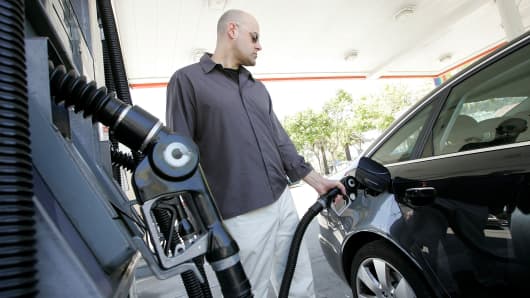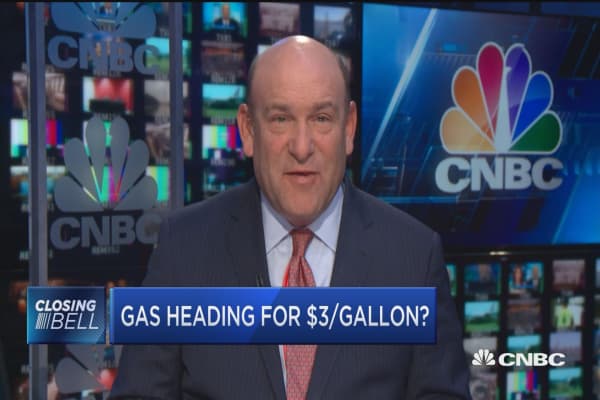- Right now, the national average per gallon is about $2.76, compared with $2.40 a year ago.
- The amount is the highest it's been since summer 2015, when the average peaked at $2.81.
- There are ways to save on gas, including shopping around and planning ahead.
With oil prices climbing and demand high, drivers are paying more to fill their gas tanks than they have in three years.
The national average for a gallon of
gas has climbed to $2.76, marking the highest it's been since summer
2015 when the cost peaked at $2.81, according to online gas station
database GasBuddy.com's latest weekly survey of 135,000 gas stations
across the country.
Californians are paying
the most: $3.56 per gallon. By contrast, motorists are paying about
$2.44, the lowest state average, in Missouri.
Prices are expected to continue climbing into the summer months.
"While it won't cost motorists as much as it did during 2011-2014, it will cost them millions more every day versus last year," said Patrick DeHaan, senior petroleum analyst for GasBuddy.com.
During that four-year span, the average per-gallon price remained between $3 and $4.
While the cost typically heads higher every spring due to increased driving demand, the current average is 15 percent more than the $2.40 consumers paid a year ago before that amount headed downward. For most of summer 2017, the average price hovered around $2.30 or trended lower.
"While it won't cost motorists as much as it did during 2011-2014, it will cost them millions more every day versus last year," said Patrick DeHaan, senior petroleum analyst for GasBuddy.com.
During that four-year span, the average per-gallon price remained between $3 and $4.
While the cost typically heads higher every spring due to increased driving demand, the current average is 15 percent more than the $2.40 consumers paid a year ago before that amount headed downward. For most of summer 2017, the average price hovered around $2.30 or trended lower.
If the higher prices pinch your budget or affect your vacation plans, there are ways to save money on gas.
For starters, shop around.
Depending on where you live, there can be big price swings between gas stations. For instance, a review of the Los Angeles area found a difference of about $1 per gallon between the highest- and lowest-price stations, DeHaan said.
While the difference in price per gallon may only be a few pennies, it still adds up.
"Even if it's a difference of a nickel or dime, that could become a couple hundred dollars in savings," DeHaan said.
For starters, shop around.
Depending on where you live, there can be big price swings between gas stations. For instance, a review of the Los Angeles area found a difference of about $1 per gallon between the highest- and lowest-price stations, DeHaan said.
While the difference in price per gallon may only be a few pennies, it still adds up.
"Even if it's a difference of a nickel or dime, that could become a couple hundred dollars in savings," DeHaan said.
Also, if you cross state lines in your driving, be
aware that there can be stark differences in price from one state to the
next.
"Sometimes the difference can be 40 cents or even 80 cents a gallon," DeHaan said.
Additionally, if you can
plan ahead by using an app to find the best prices along your route, do
it, DeHaan said. Some gas stations also offer discounts if you pay with
cash.
AAA offers these tips for saving on gas as you drive:
- Slow down. The faster you drive, the more fuel you use. Every 5 miles per hour over 50 mph is like paying an additional 18 cents per gallon, according to the Department of Energy.
- Share work or school rides by carpooling, or consider public transportation.
- Do not use your trunk for long-term storage. The heavier your car, the more fuel it uses.
- Combine errands. If possible, park in a central spot and walk from place to place.



No comments:
Post a Comment